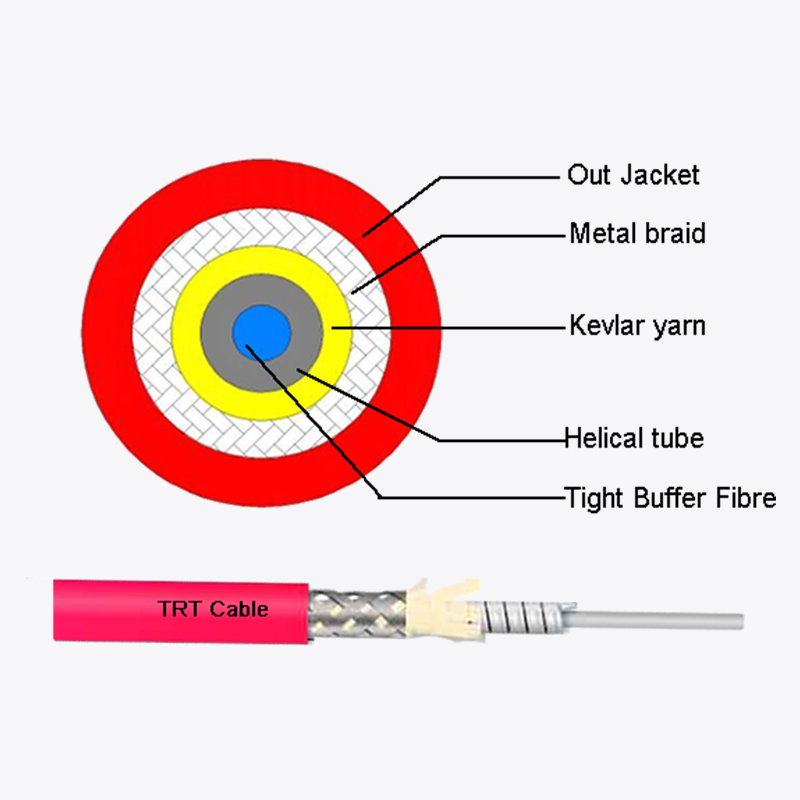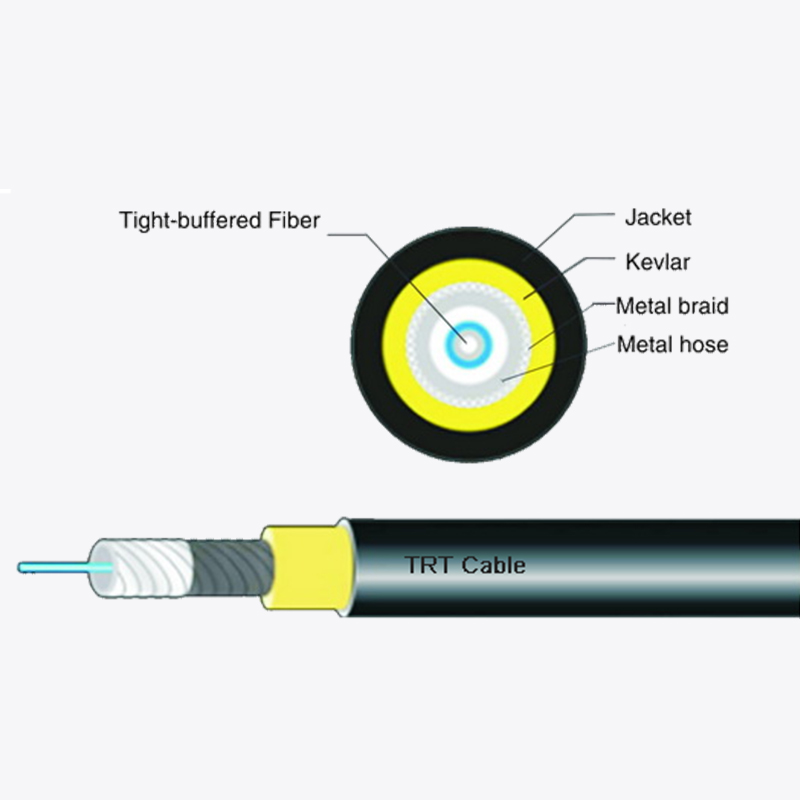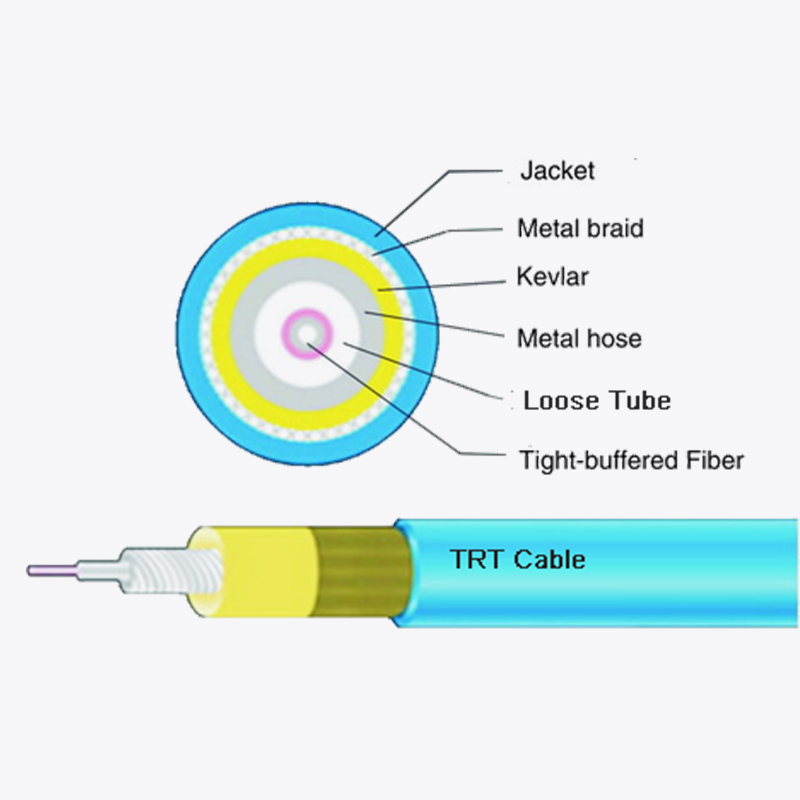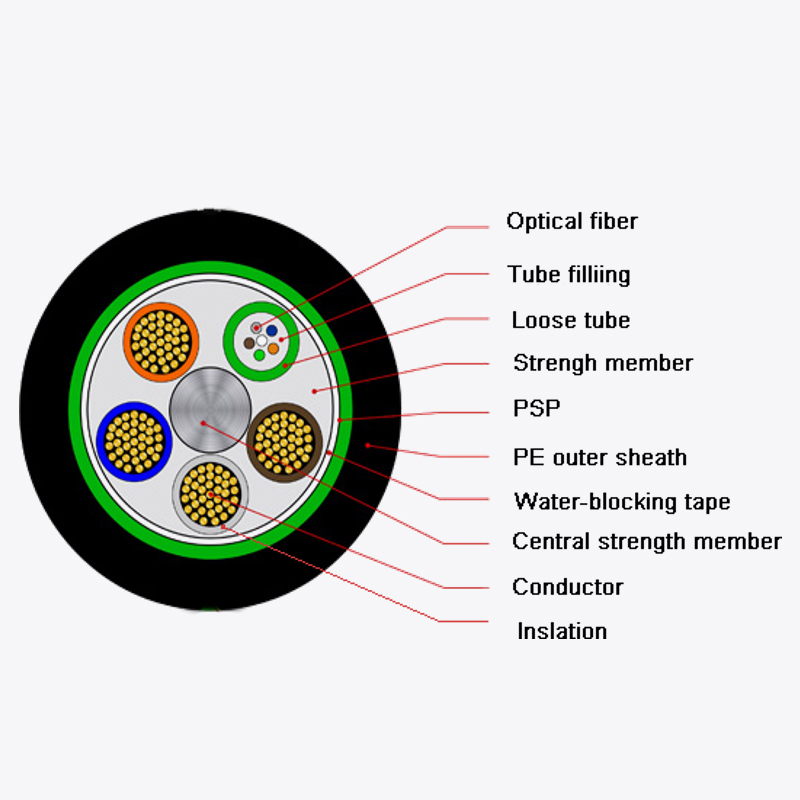Web Menu
Product Search
Exit Menu
Single-Mode or Multi-Mode: Which Waterproof Pig-Tail is Right for Your Application?
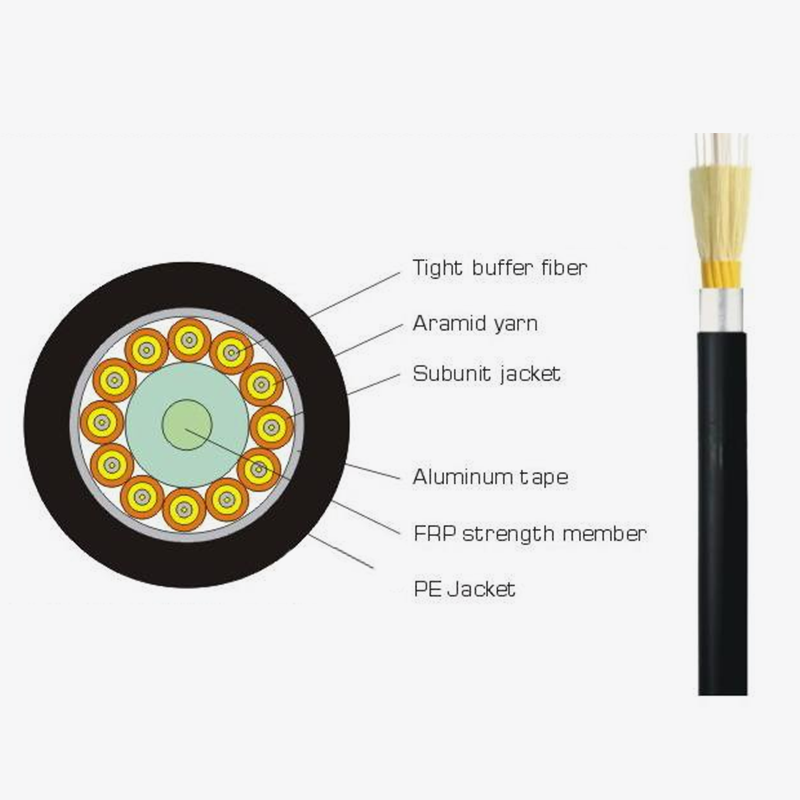
Single-Mode or Multi-Mode: Which Waterproof Pig-Tail is Right for Your Application?
In the intricate world of fiber optic connectivity, the critical link between the outdoor plant and indoor equipment is often the most vulnerable. Exposed to moisture, temperature fluctuations, and physical stress, this junction point requires a component that is both precisely engineered and exceptionally robust. This is where the waterproof pig-tail fiber optic cable becomes an indispensable solution. Designed to provide a sealed, reliable transition from the harsh external environment to the controlled conditions of a termination box or panel, these pig-tails are fundamental to the integrity of any network exposed to the elements. However, selecting the correct type is not merely a matter of choosing a waterproof shell; the core decision lies in the fiber itself. The choice between single-mode and multi-mode fiber within that waterproof pig-tail fiber optic cable is a fundamental technical and economic decision that directly impacts performance, scalability, and cost.
Understanding the Fundamentals: Core Concepts Defined
Before delving into the comparison, it is essential to establish a clear understanding of the key components and principles involved. A waterproof pig-tail fiber optic cable is a short length of optical fiber that has one end terminated with a factory-polished connector (such as LC, SC, or FC) and the other end comprising bare fiber, ready for splicing. The critical differentiator from a standard pig-tail is the integrated waterproof protection, typically achieved through robust, multi-layered cable jacketing (often LSZH or PE) and a waterproof connector boot or gland that provides an IP67 or IP68 rating. This ensures the connector interface is completely protected against dust and prolonged immersion in water.
The terms single-mode and multi-mode refer to the internal optical pathway within the fiber’s microscopic glass core. This core is the central channel through which light pulses travel to transmit data. The diameter of this core and the specific way light travels through it define the fiber’s type and, consequently, its capabilities. This fundamental difference in physics dictates every aspect of its performance, from the distance it can cover to the amount of data it can carry and the cost of the associated transceivers.
In-Depth Analysis of Single-Mode Fiber in Waterproof Pig-Tails
A single-mode waterproof pig-tail fiber optic cable features an extremely narrow core, typically between 8 and 10 micrometers in diameter. As the name implies, it is designed to allow only a single mode, or a single pathway, of light to travel down the core. This is achieved by using a highly focused laser light source that emits light at a specific wavelength, most commonly 1310nm or 1550nm.
The primary advantage of this design is the virtual elimination of a phenomenon called modal dispersion. In simpler terms, because all light pulses take the same direct path, they arrive at the receiving end at nearly the same time. This results in a signal that can travel vastly longer distances without significant degradation. A single-mode waterproof pig-tail fiber optic cable is capable of supporting data transmission over dozens, even hundreds, of kilometers without the need for signal amplification, making it the undisputed choice for long-haul communication. Furthermore, single-mode fiber offers virtually unlimited bandwidth potential. Its ability to support higher bandwidth over longer distances makes it inherently future-proof, easily accommodating network upgrades and increased data demands simply by changing the transmission equipment on either end, without the need to replace the physical fiber infrastructure.
The trade-off for this superior performance has traditionally been cost. The laser diodes required for single-mode systems are more complex and expensive to manufacture than the light sources used for multi-mode. However, the cost gap has narrowed significantly over the years. While the initial investment in active equipment may be higher, the longevity, scalability, and minimal signal loss of a single-mode system often lead to a lower total cost of ownership for large-scale or long-distance projects.
In-Depth Analysis of Multi-Mode Fiber in Waterproof Pig-Tails
A multi-mode waterproof pig-tail fiber optic cable has a much larger core diameter, typically 50 or 62.5 micrometers. This larger core allows multiple modes, or multiple pathways, of light to propagate simultaneously. These systems typically use Light Emitting Diodes (LEDs) or Vertical-Cavity Surface-Emitting Lasers (VCSELs) that operate at 850nm or 1300nm wavelengths, which are less expensive to produce than the lasers used in single-mode systems.
The larger core diameter makes alignment and connection easier during installation, which can reduce termination costs. The primary historical advantage of multi-mode fiber has been its cost-effectiveness for short-distance applications. The transceivers (the components that convert electrical signals to optical signals and vice versa) for multi-mode fiber are generally less expensive than their single-mode counterparts. This made multi-mode the traditional choice for local area networks (LANs), data centers, and campus environments where links are typically under 550 meters.
However, the multi-path nature of light travel in multi-mode fiber causes modal dispersion. Because light pulses traveling at different angles arrive at the receiver at slightly different times, the signal can spread out and become distorted, limiting both the bandwidth and the achievable distance. To combat this, different grades of multi-mode fiber have been developed, categorized as OM1, OM2, OM3, OM4, and OM5. Each generation is optimized to support higher data rates over longer distances within the multi-mode realm, but all are fundamentally constrained by the physics of modal dispersion compared to single-mode.
Critical Factors for Selection: A Detailed Comparison
Choosing between a single-mode and multi-mode waterproof pig-tail fiber optic cable is not a matter of which is universally “better,” but which is more suitable for a given set of parameters. The decision should be driven by a careful analysis of the following factors.
Transmission Distance: This is often the most decisive factor. If the required link length exceeds 550-600 meters, single-mode fiber is the only viable option. Its low attenuation characteristic makes it perfect for FTTH (Fiber to the Home) networks, telecom backbones, and any long-distance outdoor application. For connections within a single building, between adjacent buildings on a campus, or inside a data center (distances under 500 meters), multi-mode remains a strong and cost-competitive contender.
Bandwidth Requirements: Consider both current and future needs. Single-mode fiber offers immense, scalable bandwidth that can support technologies like Dense Wavelength Division Multiplexing (DWDM), effectively future-proofing the network infrastructure. While modern OM4 and OM5 multi-mode fibers support very high data rates (like 100G Ethernet) over short distances, they have a defined physical limit. For an enterprise that anticipates significant growth in data traffic or a service provider building a network for the next 20 years, the unlimited potential of single-mode is a powerful argument.
Total Project Budget: A comprehensive cost analysis must look beyond the price of the waterproof pig-tail fiber optic cable itself. While multi-mode transceivers are typically cheaper, the overall system cost must be evaluated. For a new, greenfield installation where both fiber and active equipment must be purchased, the lower transceiver cost of multi-mode can be attractive for short links. However, for a network that requires long distances or must be designed for long-term scalability, the higher initial cost of single-mode active equipment is often justified by the avoidance of a complete fiber overhaul in the near future.
Existing Infrastructure: The choice is frequently dictated by the infrastructure already in place. If an existing network is built on multi-mode fiber, extending it with a multi-mode waterproof pig-tail fiber optic cable is the logical and economical choice, unless a mode-conditioning patch cord or media converter is used to interface with single-mode. The same principle applies to networks built on single-mode; introducing multi-mode would require unnecessary conversion equipment.
The following table provides a concise summary of the key differences:
| Feature | Single-Mode Waterproof Pig-Tail | Multi-Mode Waterproof Pig-Tail |
|---|---|---|
| Core Diameter | 8-10 µm | 50 or 62.5 µm |
| Light Source | Laser (1310nm, 1550nm) | LED/VCSEL (850nm, 1300nm) |
| Bandwidth | Very High (Virtually Unlimited) | High (Limited by Modal Dispersion) |
| Maximum Distance | 10km to 80km+ | Up to 550m (for 10G+ OM4/OM5) |
| Cost (Cable) | Slightly Higher | Slightly Lower |
| Cost (Transceivers) | Higher | Lower |
| Primary Applications | Telecom, FTTH, Long-Haul, MAN | LAN, Data Centers, Campus Networks |
Application-Specific Recommendations
Understanding the theory is crucial, but applying it to real-world scenarios is key. Here are detailed recommendations for common applications that require a waterproof pig-tail fiber optic cable.
Fiber-to-the-Home (FTTH) and Access Networks: This is almost exclusively the domain of single-mode fiber. The distances from the central office or cabinet to the subscriber premises can vary greatly but often exceed the capabilities of multi-mode. Furthermore, the immense bandwidth required to serve multiple households with high-speed internet, video, and voice services aligns perfectly with single-mode’s capabilities. A single-mode waterproof pig-tail fiber optic cable is used at the termination point on the outside wall of a home or in a weatherproof enclosure to provide a sealed, spliced connection from the drop cable to the indoor optical network terminal (ONT).
5G and Mobile Network Infrastructure: The rollout of 5G networks relies on a dense mesh of small cells connected by a robust fiber backhaul. These connections often require covering distances between hundreds of meters to several kilometers between cell sites and aggregation points. Single-mode fiber is the only technology that can provide the necessary low latency and high bandwidth for these critical links. Waterproof pig-tail fiber optic cable components are essential for sealing connections at the top of poles, within street-side cabinets, and on tower-mounted equipment.
Enterprise and Campus Networks: This environment presents a more mixed scenario. The backbone connecting different buildings across a corporate or university campus often requires single-mode fiber due to the longer distances involved. However, within a single building, multi-mode fiber is frequently deployed for horizontal cabling and to connect servers within a data hall. In these outdoor-to-indoor transition points, such as at the building entrance facility, a waterproof pig-tail fiber optic cable is critical. The choice of single-mode or multi-mode for this pig-tail will be entirely determined by the type of fiber in the outdoor conduit and the indoor backbone.
Industrial Automation and harsh environments: Manufacturing plants, chemical processing facilities, and transportation systems often require robust data links that are immune to electromagnetic interference. Both single-mode and multi-mode waterproof pig-tail fiber optic cable solutions are used here. The choice depends on distance. For connecting devices across a large factory floor or between widely separated facilities, single-mode is preferred. For shorter machine-to-machine links on a production line, the traditionally lower cost of multi-mode active equipment can be a deciding factor. The key requirement is the waterproof and often additionally armored nature of the pig-tail to withstand moisture, oil, dust, and physical impact.
Installation and Handling Best Practices
Regardless of the fiber type selected, proper installation is paramount to realizing the full performance of a waterproof pig-tail fiber optic cable. The waterproof integrity is only as good as the installation process. The gland or boot system must be correctly tightened and seated according to the manufacturer’s specifications to achieve the stated IP rating. Strain relief should be properly engaged to prevent tension on the fragile fusion splice point behind the connector.
When preparing to splice the bare fiber end of the pig-tail, cleanliness is non-negotiable. Every connector end-face must be inspected with a fiber microscope and cleaned with appropriate lint-free wipes and solvent before mating. Any contamination, such as dust, oil, or moisture, inside the connection will cause significant signal loss (attenuation) and back reflection, degrading network performance. Furthermore, while the cable is designed to be tough, the fibers inside are glass and can be easily broken if bent too sharply. It is critical to observe the minimum bend radius specified for the cable, both during installation and in its final resting position, to prevent microbends and macrobends that induce loss.
 Address:Zhong'an Road, Puzhuang Town, Suzhou City, Jiangsu Prov., China
Address:Zhong'an Road, Puzhuang Town, Suzhou City, Jiangsu Prov., China Phone:+86-189 1350 1815
Phone:+86-189 1350 1815 Tel:+86-512-66392923
Tel:+86-512-66392923 Fax:+86-512-66383830
Fax:+86-512-66383830 Email:[email protected]
Email:[email protected] Wechat: xiaobin18913501815
Wechat: xiaobin18913501815 whatsapp: +86 18913501815
whatsapp: +86 18913501815
 0
0

 English
English русский
русский Español
Español Português
Português عربى
عربى